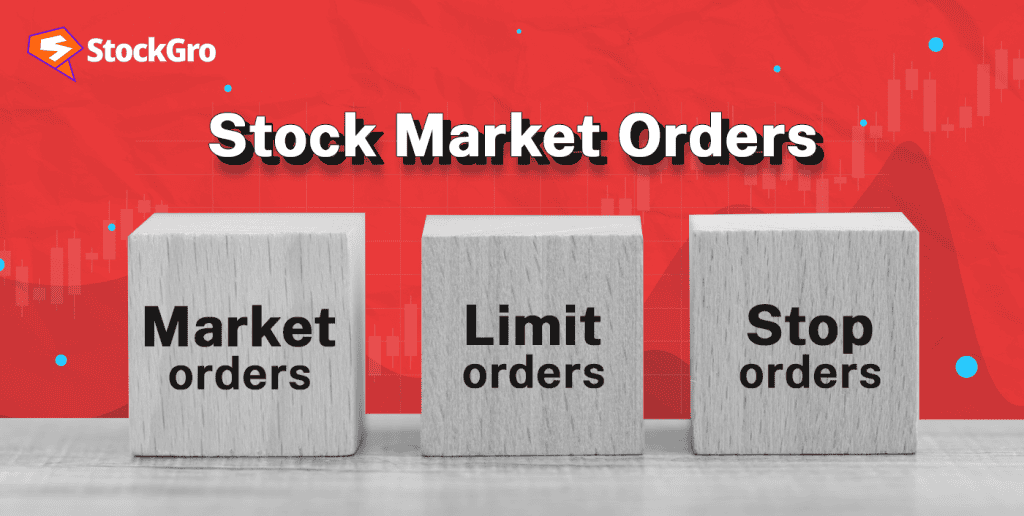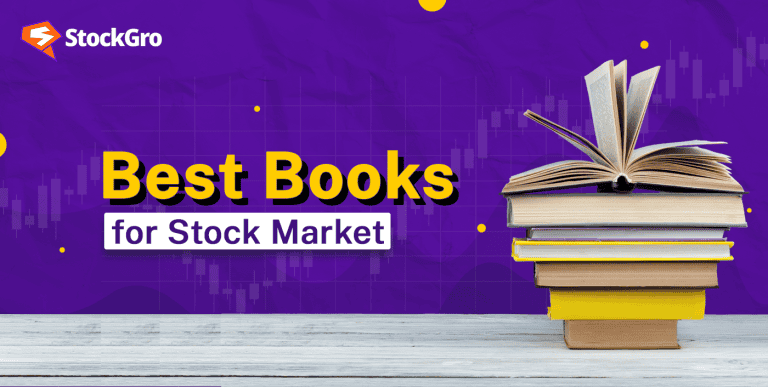
Introduction
Investors looking to purchase/sell securities, like stocks, typically place orders through their trading accounts. When placing buy or sell orders, timing is crucial. The type of order selected can also have significant impacts in terms of price and time constraints.
Market orders, limit orders and stop orders are three common stock market order types that should be used effectively when creating trading strategies.
Each order type provides unique functionality, which should be taken advantage of effectively when buying or selling shares. By understanding all available order types, you can avoid costly errors when buying and selling.
Market orders are executed at the current market price; stop and limit orders can be activated at specific points in time. Utilising such orders with an effective trading strategy can prove highly successful!
Understanding stock market order
What does an order mean in a stock market context?
In this respect, an order is defined as any instructions or requests to purchase or sell securities, including but not limited to shares, bonds, or options, on a specified date and time. Orders dictate how and when trades shall be conducted based on certain considerations such as price and the presence or absence of various market participants.
Different orders offer differing degrees of control over the price at which a trade is executed, making them invaluable tools in mitigating investment risk. We will explore three primary order types here: market, limit and stop orders.
Must read: Here’s all about the different types of orders in the stock market
Market order: What and how does it work?
Market orders are the simplest and most used type of order type.
When placing one, you are instructing your broker to buy or sell stock at its current best available price immediately – ideal for situations when speed is of the utmost importance.
For example, stock “A” is trading at ₹100. If you feel the price of the stock will soon increase, you place a market order to buy stock at ₹100. In market order – you might get the exact price (₹100) or the best available price.
Placing a market order does not guarantee you an exact cost price.
Market orders can be especially useful when stock prices change drastically and quickly. When entering trades with market orders, your goal should always be to complete them quickly for maximum effectiveness and profit potential.
When to use a market order?
- When an immediate transaction is needed.
- If trading highly liquid stocks with minimal price fluctuations.
- When the current stock price aligns with your financial goals.
Also read: Exploring the world of trading: The market order
What is the limit order?
Limit orders offer more control over the price at which your trades are executed.
When placing one, you are setting an exact price that must either fall below or surpass that limit price – in other words, for buying stocks, this transaction won’t take place until that price or below has been reached, while when selling stocks they only trade at or above that limit price.
For example, suppose that a stock currently trading at ₹100 falls to ₹95, but your prediction is that it will fall further, so you could place a buy limit order set at that amount; your order would then be executed when that price has been reached or lower.
Likewise, if you want to sell one for no less than ₹110, placing a sell limit order would do just the opposite.
Limit orders can be useful when you believe you can find a lower/higher market price than what currently prevails. Unlike market orders, limit orders don’t guarantee execution – they will only occur if the stock reaches the limit price you set and enough buyers or sellers are willing to meet that limit price.
When should a limit order be placed?
- When you are willing to wait for a more favourable price.
- If you are trading in a less liquid market where prices can fluctuate more significantly.
- When price control is more important than the speed of execution.
Stop order: What is it?
Stop orders are used to protect investors against losses by setting limits or protecting gains, acting as stop losses in specific instances and becoming market orders once their target price (known as their “stop price”) has been reached.
For example, if you bought a stock for ₹100 and it has since reached ₹160, to protect your profits and guarantee future gains you might place a sell-stop order of ₹150; should the price of that stock fall to that threshold or below, your stop order will trigger and convert into market order, offering to sell at its next available price.
Stop orders can also be used as buy-stop orders to acquire stocks at their current market prices, typically placed above them to capture any upward momentum a stock may exhibit in its rise.
Stop orders can sometimes prove tricky as they do not guarantee execution at your stop price, as market movements could result in it being filled at either lower (sell stops) or higher prices ( buy stops) than that specified as its stop price.
When should a stop order be implemented?
- When trying to limit losses on an investment position.
- When protecting gains by setting sell stop orders near recent highs.
- When entering the market at specific price thresholds.
You may also like: Stop-Loss order – Are you using it?
Market order vs limit order vs stop order
Here is a table that highlights the key differences between market order vs limit order, limit order vs stop order, and market order vs stop order.
| Market Order | Limit Order | Stop Order | |
| Meaning | An order to buy or sell immediately at the current market price. | An order to buy or sell at a specified price or better. | An order that triggers a market order when a specified price is reached. |
| Execution speed | Immediate (as long as the market is open and liquid). | Only executed when the stock reaches the specified limit price or better. | Converts to a market order when the stop price is reached. |
| Best use case | When speed is a priority, and you are willing to accept the current market price. | When price precision is more important than immediate execution. | When you want to limit losses or lock in profits by triggering an order once the price reaches a certain level. |
| Risk of partial fill | Low; usually fills the entire order instantly. | Higher; may not fill if the market doesn’t reach the limit price. | Similar to a market order once triggered, but may not execute exactly at the stop price. |
| Guaranteed execution | Yes, but no guaranteed price. | No, only executes if the price reaches or exceeds the limit. | Yes, once triggered, but no guarantee on the exact price. |
| Control over losses | Minimal, as price fluctuations can lead to unexpected results. | High, as trades occur at the specified price or better. | Used specifically to manage or limit losses once a price threshold is crossed. |
Bottomline
An understanding of market, limit, and stop orders is vital to successful trading. Market orders offer fast execution, limit orders ensure precise pricing, and stop orders function as risk management tools.
By learning these order types, you can better align your trading strategies with your financial goals – be they speed of execution, price control or protection from losses.
FAQs
1. What are orders in the stock market?
An order refers to instructions or requests to buy or sell securities such as shares, bonds or options at a specified date and time. Orders specify how and when trades will occur depending upon factors like price and market participants present or absent.
Order types provide various degrees of control over the price at which a trade will occur, making them invaluable tools in mitigating investment risk.
2. What is an example of a market order?
When executing market orders with a broker – one directs them to buy or sell a specific stock at the present best price without any delay. It is excellent in situations where quick action is the only option.
For instance, let us assume one of the stocks trading as A is priced at ₹100, and one fears this price is about to increase. You would then place a market order while buying the shares at this price of ₹100 per share.
3. What are the four main types of orders?
The four main types of orders are:
- Market orders,
- Limit orders,
- Stop orders, and
- Stop-limit orders
Market orders offer fast execution, limit orders ensure precise pricing, and stop orders function as risk management tools. Different order types provide various degrees of control over the price at which a trade will occur, making them invaluable tools in mitigating investment risk.
4. How to do a market order?
In a market order, you are instructing your broker to buy or sell stock at its current best available price immediately. A market order is ideal for situations when speed is of the utmost importance.
To execute a market order – first sign in to the brokerage account, pick the stock in question, select ‘market order,’ specify the amount and type of transaction (buy/sell), and click confirm.
5. What is a limit buy in stocks?
When placing limit orders, you are setting an exact price that must either fall below or surpass that limit price. In other words, for buying stocks this transaction won’t take place until that limit price or below has been reached, while when selling stocks – they only trade at or above that limit price.

